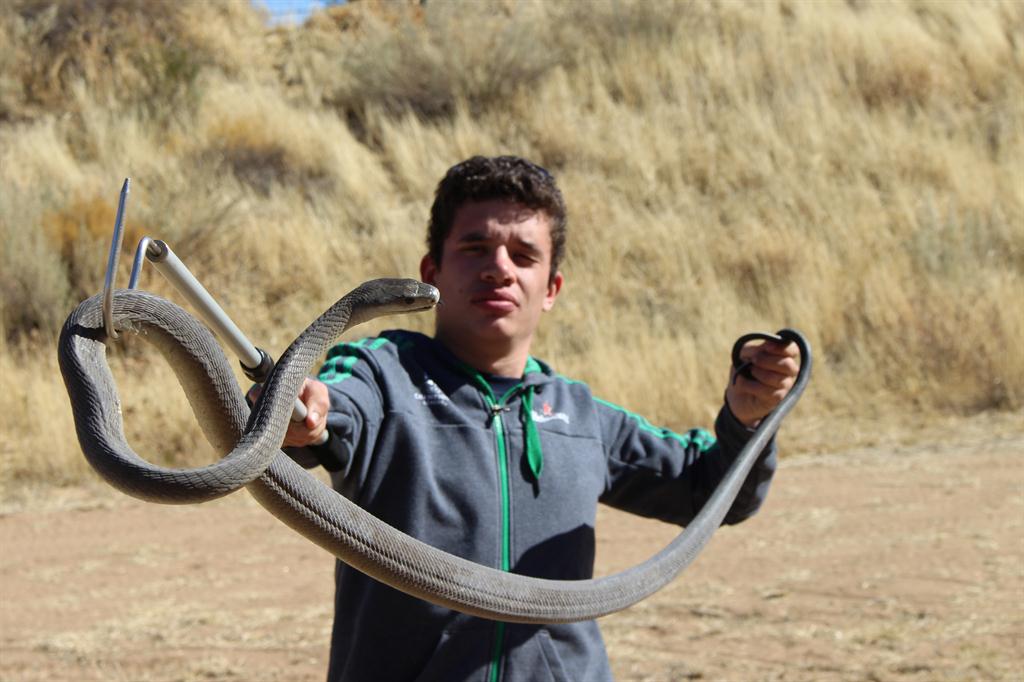Tackling human-snake conflict
Snake catchers have over the past three years removed more than 500 snakes from suburbs and informal settlements in and around Windhoek
Namibian snake experts are urging Windhoekers to take part in a quick online survey in which they describe any brushes with snakes, in order to find ways to address human-snake conflict.
Francois Theart, who has long worked to bust myths around snakes and campaigns for their rescue and release, instead of killing, says while much has been done to investigate carnivore-human conflict, little has been done to address increasing human-snake conflict, especially in urban areas.
“There is no management plan for snake conflict and we are trying to come up with a viable, proven and tested way on how to mitigate conflict between humans and snakes.”
Theart said snake catchers have over the past three years removed more than 500 snakes from suburbs and informal settlements in and around Windhoek, indicating that encounters, and possible conflict, between humans and snakes, is high.
In line with this, the snake research project at Nust has posted on easy to answer online survey consisting of 13 questions, titled 'Human-snake interactions in and around Windhoek'.
The survey can be accessed on the Snakes of Namibia Facebook page, and consists of easy to answer questions that range from how often a snake has been seen, where and what a person's response was to the event.
“What this will do is enable us do come up with an idea of what people's reactions are. Do they think of it as a negative encounter? Do they prefer to kill snakes or do they call out for help.”
Of the responses collected so far, 51% of respondents said they called a snake catcher to remove the snake, 22% of respondents said they tried to kill the snake and 10% admitted they tried to catch it.
Theart's advice is to leave the snake alone and call a catcher, if possible, while keeping a careful distance and an eye on the snake.
Snakes form a vital part of a healthy and balanced ecosystem, feeding on pests such as rodents and reducing the risk of diseases spread by pest species.
Snakes also form part of the diet of various other animal species. Theart warned that if they are killed at unsustainable levels, ecosystems will suffer.
Snake venom is used to produce a variety of medicines, including pain, anti-clotting and heart medication.
“Without these misunderstood animals we might never find a cure for cancer, HIV or Parkinson's disease,” he told Namibian Sun during a previous interview.
JANA-MARI SMITH
Francois Theart, who has long worked to bust myths around snakes and campaigns for their rescue and release, instead of killing, says while much has been done to investigate carnivore-human conflict, little has been done to address increasing human-snake conflict, especially in urban areas.
“There is no management plan for snake conflict and we are trying to come up with a viable, proven and tested way on how to mitigate conflict between humans and snakes.”
Theart said snake catchers have over the past three years removed more than 500 snakes from suburbs and informal settlements in and around Windhoek, indicating that encounters, and possible conflict, between humans and snakes, is high.
In line with this, the snake research project at Nust has posted on easy to answer online survey consisting of 13 questions, titled 'Human-snake interactions in and around Windhoek'.
The survey can be accessed on the Snakes of Namibia Facebook page, and consists of easy to answer questions that range from how often a snake has been seen, where and what a person's response was to the event.
“What this will do is enable us do come up with an idea of what people's reactions are. Do they think of it as a negative encounter? Do they prefer to kill snakes or do they call out for help.”
Of the responses collected so far, 51% of respondents said they called a snake catcher to remove the snake, 22% of respondents said they tried to kill the snake and 10% admitted they tried to catch it.
Theart's advice is to leave the snake alone and call a catcher, if possible, while keeping a careful distance and an eye on the snake.
Snakes form a vital part of a healthy and balanced ecosystem, feeding on pests such as rodents and reducing the risk of diseases spread by pest species.
Snakes also form part of the diet of various other animal species. Theart warned that if they are killed at unsustainable levels, ecosystems will suffer.
Snake venom is used to produce a variety of medicines, including pain, anti-clotting and heart medication.
“Without these misunderstood animals we might never find a cure for cancer, HIV or Parkinson's disease,” he told Namibian Sun during a previous interview.
JANA-MARI SMITH





Comments
Namibian Sun
No comments have been left on this article